The Red Sea Crisis and the Plight of Egyptian Fruit and Vegetable Exports

Egypt, the land of pyramids and the cradle of civilization, boasts a thriving agricultural sector. Its fertile Nile Delta and warm climate provide the ideal environment for cultivating a bounty of fruits and vegetables, earning it a prominent position in the global produce market. However, a storm has brewed in the Red Sea, disrupting the smooth flow of Egyptian exports and threatening the livelihoods of countless farmers and exporters.
This article delves into the cascading effects of the Red Sea crisis on Egyptian fruit and vegetable exports, drawing insights from various sources including industry reports, news articles, and analyses from international organizations.
A Sea of Trouble: Understanding the Red Sea Crisis
The Red Sea, once a vital artery for global trade, has become a hotspot for attacks on commercial vessels since late 2023. These attacks, primarily attributed to Houthi rebels in Yemen, have forced shipping companies to reroute their vessels, primarily around the Cape of Good Hope in South Africa. While this detour ensures the safety of cargo and crew, it comes at a significant cost.
The International Monetary Fund (IMF) reports a staggering 50% drop in trade volume traversing the Suez Canal in the first two months of 2024 compared to the previous year (IMF Blog, Red Sea Attacks Disrupt Global Trade). This decline is a direct consequence of the shift to longer routes, highlighting the immediate impact on regional trade flows.
The Ripple Effect: How Disruptions are Impacting Egyptian Produce Exports
The rerouting of shipping lanes due to the Red Sea crisis has had a profound impact on Egyptian fruit and vegetable exports, particularly those known for their perishability:
Disrupted Access to Key Markets
Egyptian oranges, a major export success story, typically reach Asian markets via the Red Sea. However, the current security concerns have made this route untenable ([FreshPlaza](https://www.freshplaza.com/north-america/article/9523275/egypt-became-the-largest-northern-hemisphere-orange-supplier-to-southeast-asia/)). This has significantly impacted exports during the crucial winter season when Asian demand for Egyptian oranges is at its peak.
Longer Travel Times and Increased Costs
The rerouting of ships around Africa significantly increases travel time, adding weeks to the journey. This extended transit period poses a significant challenge for perishable goods like strawberries, grapes, and leafy greens, often leading to spoilage before reaching their destination (https://www.maersk.com/insights/resilience/2024/07/09/effects-of-red-sea-shipping). The extended voyage also translates to higher fuel consumption and operating costs for shipping companies, which are then passed on to exporters in the form of increased freight rates.
Shifting Export Focus and Market Saturation
With Asian markets becoming less accessible, Egyptian exporters are forced to divert their produce to European and Middle Eastern markets. However, this creates a glut of oranges, strawberries, and other fruits and vegetables in these regions, potentially leading to a price slump and lower profits for Egyptian producers ([Citrus Industry](https://citrusindustry.net/2024/03/22/red-sea-disruptions-hit-egyptian-citrus-exports/)).
The impact goes beyond immediate financial losses. The disruption in the supply chain threatens the reputation of Egyptian produce for freshness and reliability, potentially jeopardizing future export opportunities.
Beyond Oranges: A Broader Look at Affected Produce
While the plight of Egyptian oranges has received significant attention, the Red Sea crisis is impacting a wider range of fruits and vegetables. Here’s a glimpse into the challenges faced by other key Egyptian exports:
Strawberries
Highly perishable and prized for their delicate sweetness, Egyptian strawberries are particularly susceptible to the extended travel times caused by rerouting. This could lead to significant losses for strawberry growers in the Nile Delta.
Grapes
Egyptian grapes, known for their juicy texture and vibrant colors, face similar challenges. The longer journeys can lead to spoilage and a decline in quality, rendering them less appealing to international buyers.
Potatoes and Onions
While these root vegetables have a longer shelf life compared to fruits, they are not immune to the challenges of the Red Sea crisis. The extended journeys can lead to increased sprouting and weight loss, ultimately reducing the marketability of the produce. Additionally, the higher transportation costs can make Egyptian potatoes and onions less competitive in international markets, potentially leading to a decline in exports.
Beyond the Fields: The Human Cost of the Crisis
The disruption in Egyptian fruit and vegetable exports extends far beyond economic considerations. It has a real human cost, impacting the livelihoods of countless individuals:
Farmers
Egyptian farmers, particularly those specializing in fruits and vegetables with shorter shelf lives, face a precarious situation. The potential for spoilage during the longer journeys translates into lower profits or even financial losses. This could discourage farmers from planting these crops in the future, jeopardizing their income and contributing to a potential shortage of these essential produce items in the domestic market.
Exporters
The increased costs associated with rerouting and potential losses due to spoilage are putting a strain on Egyptian fruit and vegetable exporters. Smaller firms with limited resources may struggle to absorb these additional expenses, jeopardizing their businesses and the jobs they provide.
Laborers
The agricultural sector in Egypt employs a significant portion of the workforce, particularly in rural areas. Any decline in fruit and vegetable exports could lead to a reduction in the demand for labor, impacting the livelihoods of these workers and potentially contributing to unemployment.
The ripple effect of the Red Sea crisis underscores the interconnectedness of the global food system. Challenges faced by Egyptian exporters can translate into higher prices for consumers worldwide, particularly in markets that heavily rely on Egyptian produce.
A Glimmer of Hope: Strategies for Navigating the Crisis
Despite the challenges, Egyptian authorities, industry leaders, and exporters are actively seeking solutions to navigate the Red Sea crisis:
Investing in Cold Chain Infrastructure
Developing and expanding cold storage facilities at farms, ports, and transportation hubs is crucial for maintaining the freshness and quality of perishable produce during extended journeys. Public-private partnerships can drive investment in this critical area.
Embracing Technological Solutions
Utilizing real-time monitoring systems can help track the temperature and condition of fruits and vegetables during transport, allowing for proactive interventions to minimize spoilage. Additionally, exploring blockchain technology for improved transparency and traceability in the supply chain could enhance trust and efficiency.
Diversifying Export Markets
While Asian markets remain important, Egyptian exporters are exploring opportunities in alternative markets like North Africa and Sub-Saharan Africa, where transportation distances might be shorter and shipping costs lower.
The success of these strategies hinges on collaboration between various stakeholders, including the government, agricultural associations, logistics companies, and individual farmers and exporters.
A Global Call to Action: Ensuring a Smooth Flow of Vital Produce
The Red Sea crisis is not just an Egyptian problem; it highlights vulnerabilities in the global food system. International cooperation is essential to ensure the smooth flow of essential produce across borders:
International Security Measures
Addressing the root causes of the conflict in Yemen is crucial for ensuring the safety of shipping lanes in the Red Sea. Engaging in diplomatic efforts and promoting regional stability will facilitate the resumption of regular trade routes.
Investing in Global Supply Chain Resilience
The Red Sea crisis underscores the need for a more resilient global food system, less reliant on specific trade routes. This can be achieved by fostering international cooperation in infrastructure development, logistics optimization, and diversification of supply chains.
By working together, the international community can mitigate the impact of the Red Sea crisis on Egyptian fruit and vegetable exports and build a more resilient food system for the future.
Looking Ahead: A Sustainable Future for Egyptian Produce
The Red Sea crisis has thrown a spotlight on the challenges faced by Egyptian fruit and vegetable exporters. However, it also presents an opportunity for innovation, adaptation, and international cooperation. Investing in cold chain infrastructure, embracing technology, and diversifying export markets are some key strategies that can help Egypt navigate the current crisis and secure a sustainable future for its thriving fruit and vegetable export industry.
By addressing the human cost of the crisis, ensuring a smooth flow of vital produce across borders, and building a more resilient global food system, all stakeholders can work towards a brighter future where Egyptian fruits and vegetables continue to grace tables worldwide, fostering healthy eating habits and international trade partnerships.
Case Study: Gezira United Navigating the Storm
Egyptian companies like Gezira United, a leading exporter of fruits and vegetables with a focus on maintaining the “from seeding to shipping” concept, are feeling the squeeze of the Red Sea crisis. Their commitment to freshness and quality necessitates innovative solutions. Here’s how Gezira United can navigate these turbulent times:
Collaboration with Partners
Gezira United can leverage its industry network to collaborate with shipping companies that utilize advanced temperature-controlled containers. These specialized containers can help maintain optimal conditions for perishable goods during the longer journeys, minimizing spoilage and ensuring the arrival of fresh produce at its destination.
Optimizing Packing Techniques
Investing in research and development to create innovative packing solutions can significantly reduce damage during transport. This could involve exploring biodegradable materials with superior cushioning properties or developing specialized packaging for specific fruits and vegetables.
Regional Distribution Centers
While Asian markets remain a long-term goal, Gezira United could explore establishing regional distribution centers closer to alternative markets in North Africa or Sub-Saharan Africa. This could involve partnering with local distributors or establishing their own facilities, allowing for quicker delivery times and potentially lower transportation costs.
By embracing agility and implementing these innovative strategies, Gezira United can demonstrate its commitment to quality and ensure its delicious Egyptian produce continues to reach consumers around the world. Their success story can serve as an inspiration for other Egyptian exporters navigating the challenges of the Red Sea crisis.
Conclusion
The Red Sea crisis presents a significant challenge for Egyptian fruit and vegetable exporters. However, by embracing innovation, collaboration, and a focus on long-term sustainability the Egyptian agricultural sector can emerge stronger. By working together, stakeholders across the entire supply chain, from farmers to exporters and international partners, can ensure the continued flow of these vital products, fostering a more resilient global food system and bringing the taste of Egypt to tables worldwide.
In conclusion, while the Red Sea crisis has posed substantial challenges, it has also highlighted the resilience and adaptability of Egyptian fruit and vegetable exporters. By investing in infrastructure, embracing technological advancements, and exploring new markets, Egypt can navigate these turbulent times and build a sustainable future for its agricultural sector. The lessons learned and strategies implemented during this crisis will not only benefit Egyptian exporters but also contribute to a more stable and secure global food supply chain.
Explore
-

Fruit Logistica 2024 with the IPD
-

From Pharaohs to Ports: Egypt's Produce Export Journey
-
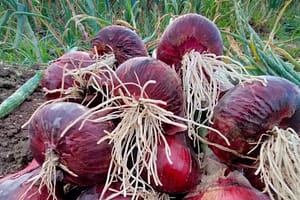
Egyptian Red Onion: Now Available with the Best Price!
-
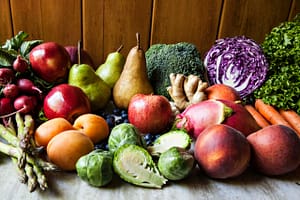
A Guide to Egyptian fruit and Vegetable Exporters and Growers
-
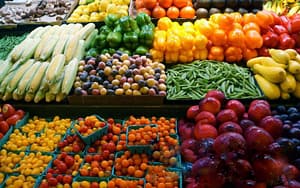
Why You Should Import Egyptian Fruits and Vegetables
-
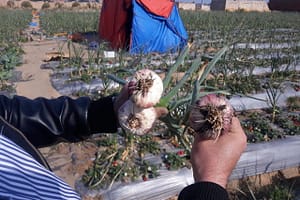
Egyptian garlic: Reasons behind importers' growing preference for it
-
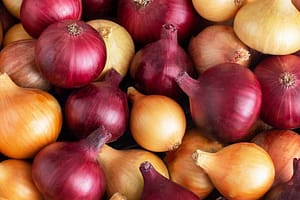
Unveiling the Superiority of Egyptian Onions in the Global Export Market
-
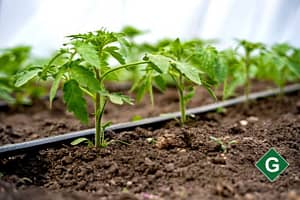
Drip Irrigation: Nurturing Crops, Preserving Resources
-

VIDEO: 2024 Fruit Logistica Summed Up - Valuable Insights
